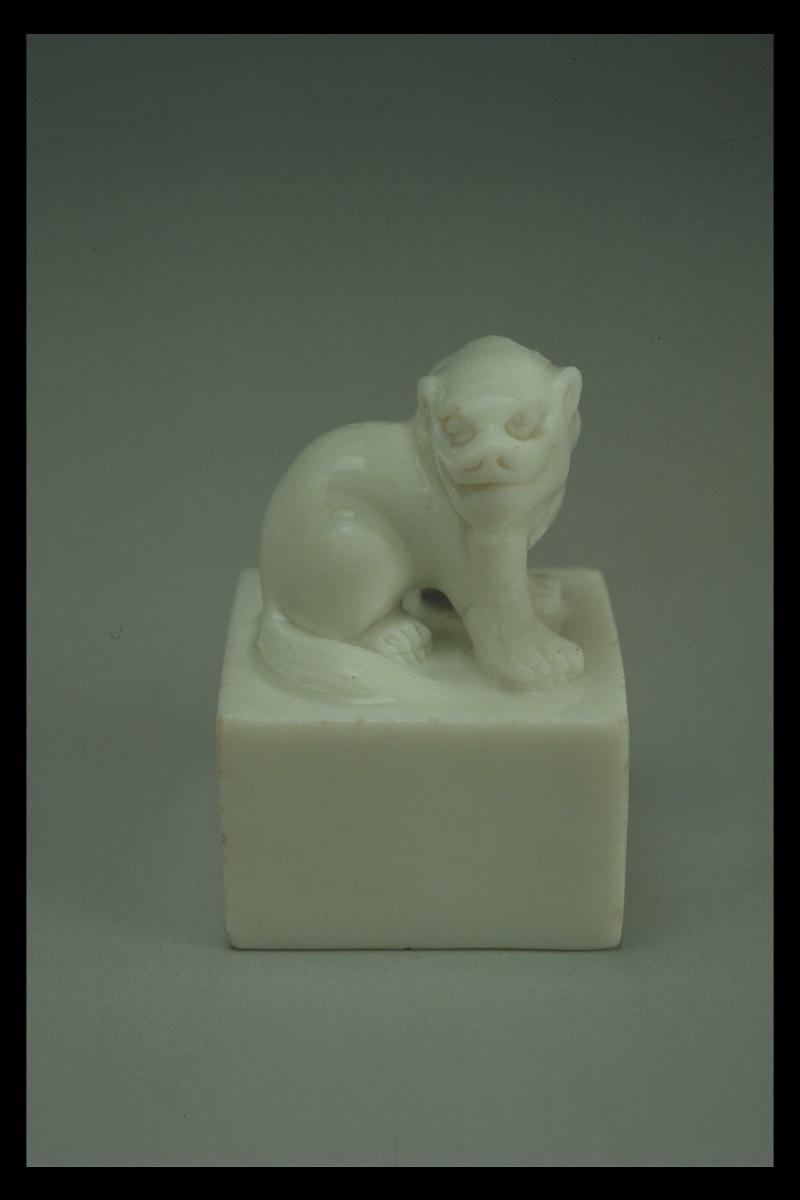Seals such as this piece attempted to imitate the stone carved seals used by scholars. One explanation for the height of seals is that the carved names were sometimes erased and re-carved when they passed on to a new owner. A taller base would facilitate easier handling and use. Dehua seals were produced in some quantity despite the fact fired porcelain was harder to carve than soap stone, jade or ivory. It is thought that this was due to its likeness to white or 'mutton fat' jade which was much admired by the literati.Dehua, located on the southeast coast of Fujian province, is well known for its production of white porcelain, known to Europeans as 'blanc de Chine'. The earliest Dehua porcelain was produced as early as the 14th century but the production and quality of these porcelain peaked around the 17th and 18th centuries.















